Georgia’s new tourism hub struggles to control construction boom

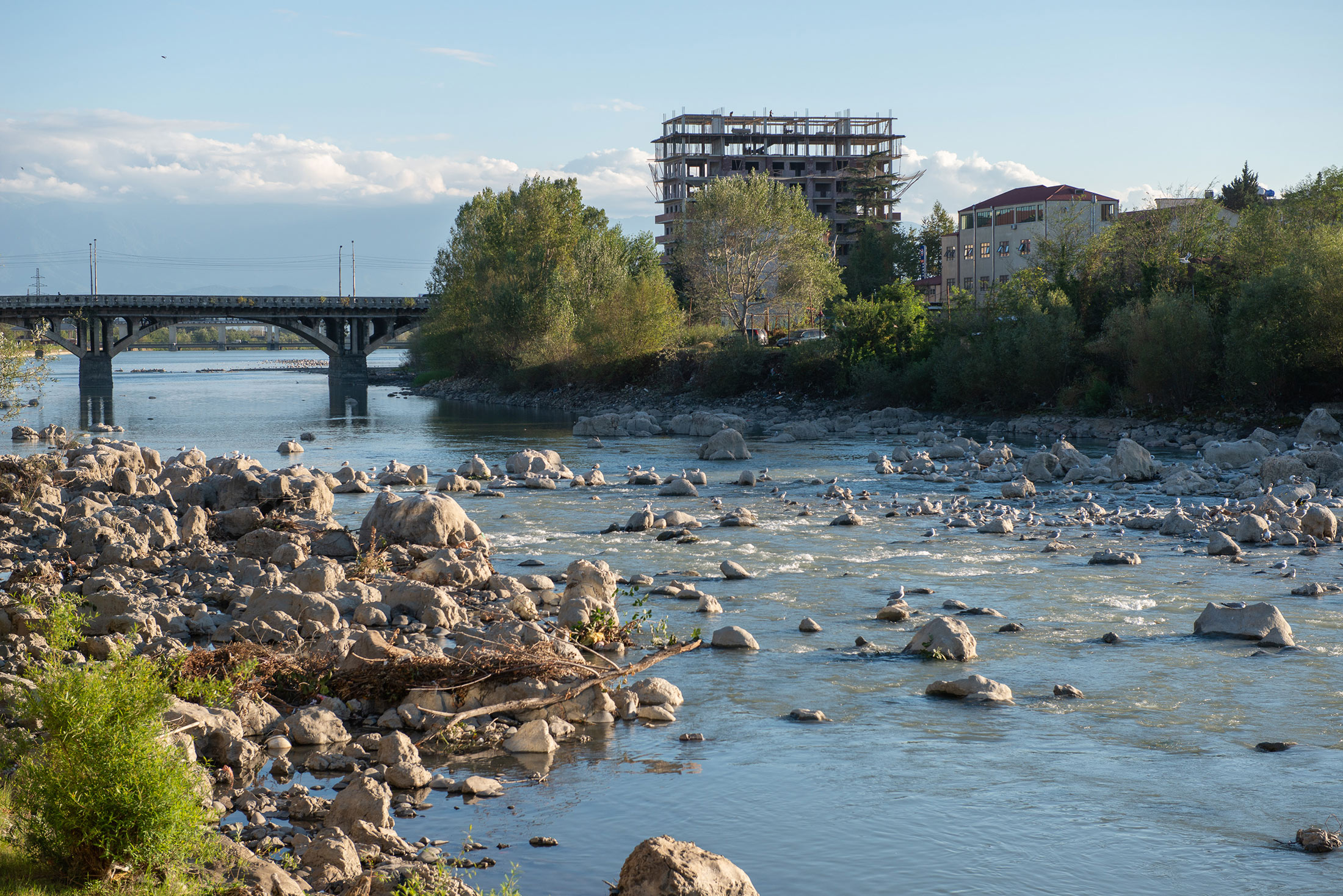
While waves of construction booms have fundamentally changed the skylines of Georgia’s two largest cities—capital Tbilisi and seaside resort Batumi—the ancient town of Kutaisi had been largely untouched. Until now.
Today, the town surges with tourists and construction sites. Walking along Rustaveli Avenue, in the center of the city, it is easy to spot aged buildings slated to be replaced by multi-story apartment houses. While the construction and tourism is creating needed jobs, locals worry that Kutaisi’s historical neighborhoods and unique architecture are at risk of following the fate of Tbilisi and Batumi, where citizens’ needs can be dwarfed by investors’ projects.
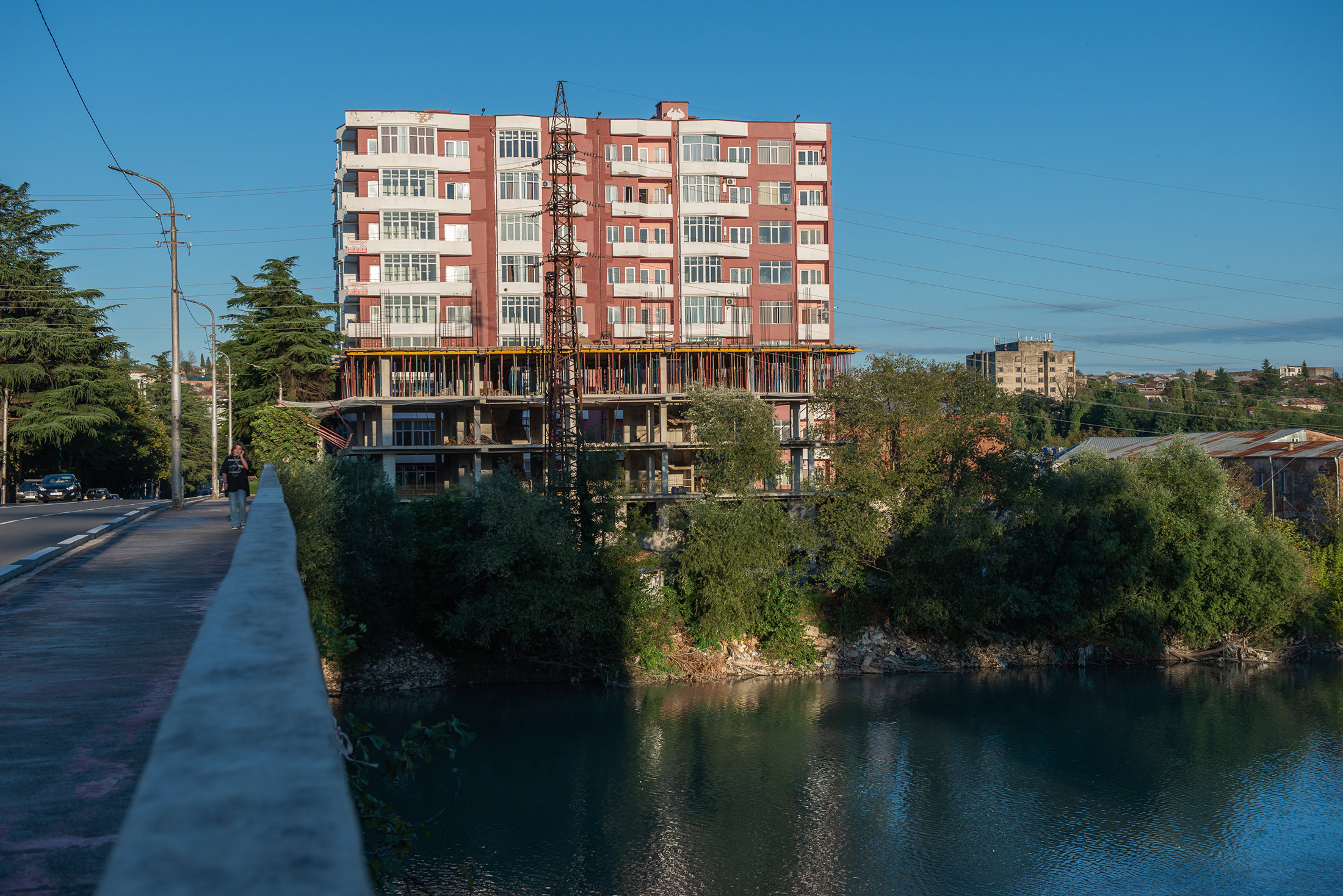
This fear is reinforced by a 156-apartment near one of the iconic bridges crossing the Rioni River that flows through the city. When soldier Avto Berdzenadze bought his apartment in the building, he was banking on the green space and expansive view. The ten-story residential building, built by Iberia Star Group, was one of the first marquee construction projects in Kutaisi.
“In 2016, few buildings were under construction…The neighborhood and views were appealing, moreover, my windows overlook both the river and the street, plus, they promised to put in a playground,” he said.
“But, instead of what was promised, we got another ten-story building [in the yard].”
The building hid the river views and blocked the sun. Despite protests, residents from other buildings have not been able to stop the construction. Aleksandre Basiladze, a marketing specialist at another Kutaisi construction company, notes demand for housing is high and high-rises are popular. In 2021- 2022, the company sold 80 apartments out of 106.
Construction has not always been booming in Kutaisi, an ancient city that was widely known as an industrial center during the Soviet Union. But when the economy faltered, the factories shuttered and there was little development in the town.
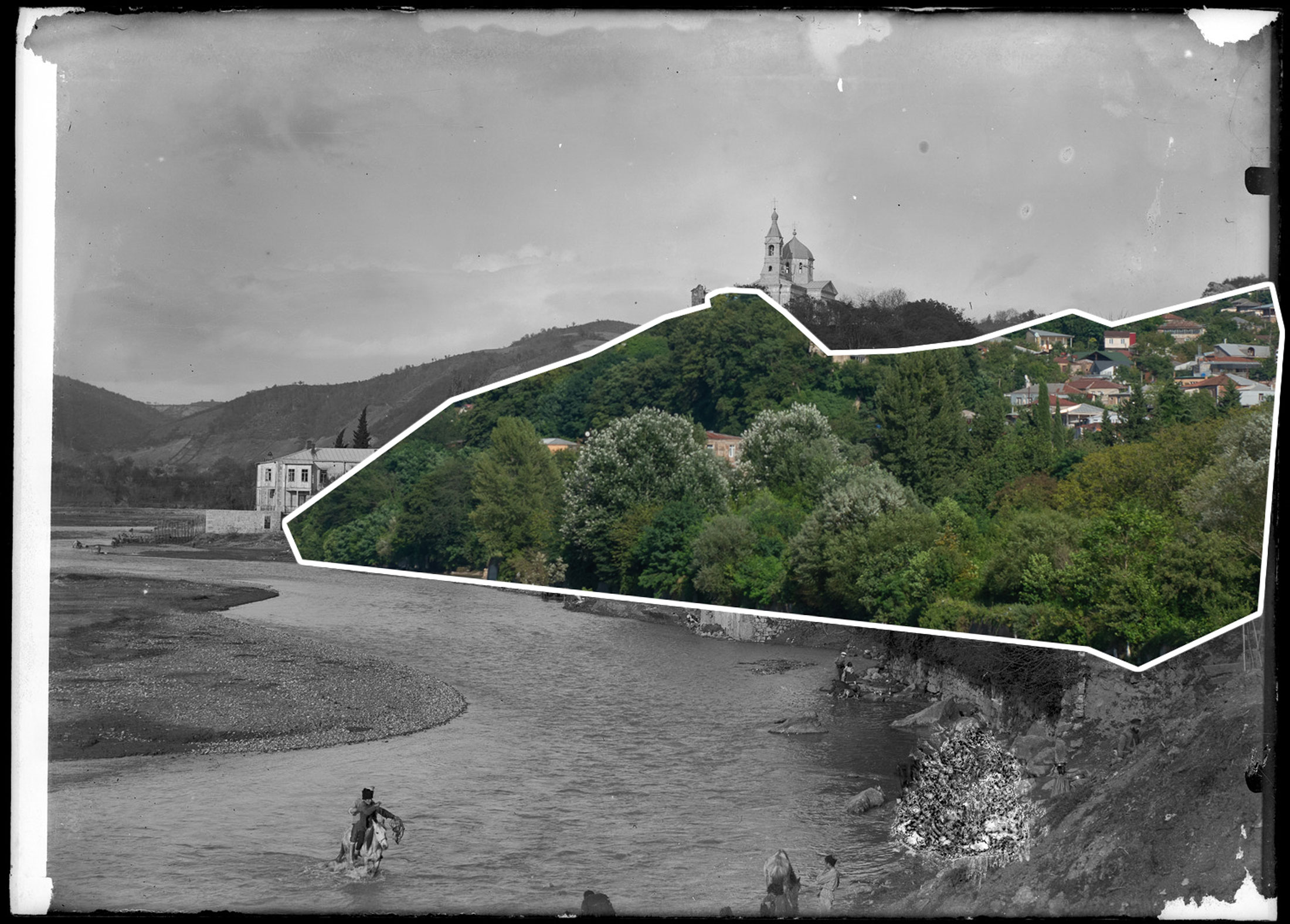
The left bank of the Rioni River overlooks one of Kutaisi's historical neighborhoods, the slope of the 'MtsvaneKvavila". Over the years the houses were lost in the trees as Kutaisi became greener, circa 1907.
The first signs of intensive building appeared in 2015-2016: Kutaisi City Hall issued 68 permits for multi-floor buildings in the past eight years, compared to 20 permits for high-rise buildings from 2003 to 2013—a period of major growth in Tbilisi and Batumi. Kutaisi, however, escaped the tyranny of concrete during the Rose Revolution era. But over the past several years, the city has started to recreate itself as a tourism hub. Scores of hotels and other tourism-related businesses have sprung up in the wake of budget airline Wizz Air’s decision to make Kutaisi its base in Georgia.

The Red Bridge, the first iron bridge in Kutaisi. It overlooks the historical neighborhood of Gora which offers panoramic views of the city. It is a favorite place for tourists, and full of guest houses, circa 1910.
The result is a morphing threat to the very things that make Kutaisi attractive for residents and tourists alike, notes Tamta Turmanidze, a film critic who lives part time in the city.
“In films, the urban space, lines, architecture, and heartbeat create an atmosphere, the city becomes a protagonist itself and helps us to explore the country and culture. The historic appearance is a trademark of Kutaisi. The heart and soul of the town are preserved in its old neighborhoods,” she said, adding she worries her beloved hometown is risking its distinctiveness.

For instance, the banks of the Rioni River have been a magnet for investors. The city’s first international brand hotel Best Western Kutaisi was built near the river, followed by other hotels, like the 125-room Ramada Kutaisi. Development hasn’t been limited to only hotels. One new project puts a high-rise residential house right next to the city’s historical synagogue.

“No one visits Kutaisi to see tall buildings. A tourist buys an emotion, childhood memories, and a sense of belonging. This old center embodies those feelings and if we aim to make tourists interested in Kutaisi itself, the historical center needs to be preserved,” Tamta notes.
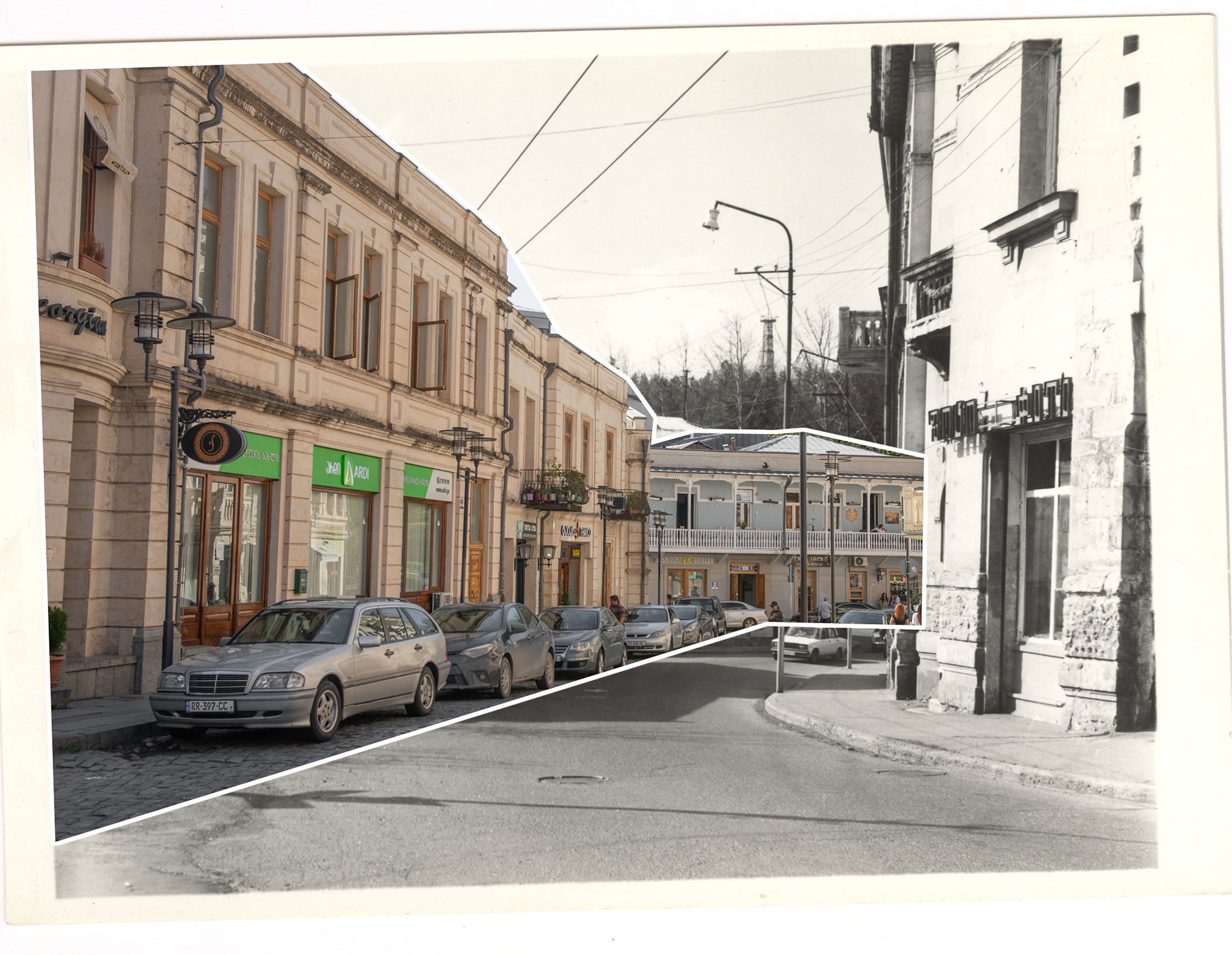
The Royal District, Pushkin Street, the heart of Kutaisi in the 1970s.
Kutaisi City Hall agrees a clear vision is needed to support development while also preserving its distinctive architecture. The city has not had a general plan since 1984; currently city planners depend on the general construction law. Rusudan Chinchaladze, the head of the City Hall's Urban Planning, Monument Protection, and Building Permits Service, said work is already underway on a new plan. It will take around two years for the general plan to be finally adopted.
“The guiding principle of the [new] general plan is that high-rise buildings are inappropriate for Kutaisi,” she said. “The historical zone needs to be preserved, and there is no doubt new construction will happen in this zone, but only in alignment with the requirements of the general plan which calls for the proper appearance, facade, paving material, height, etc.”
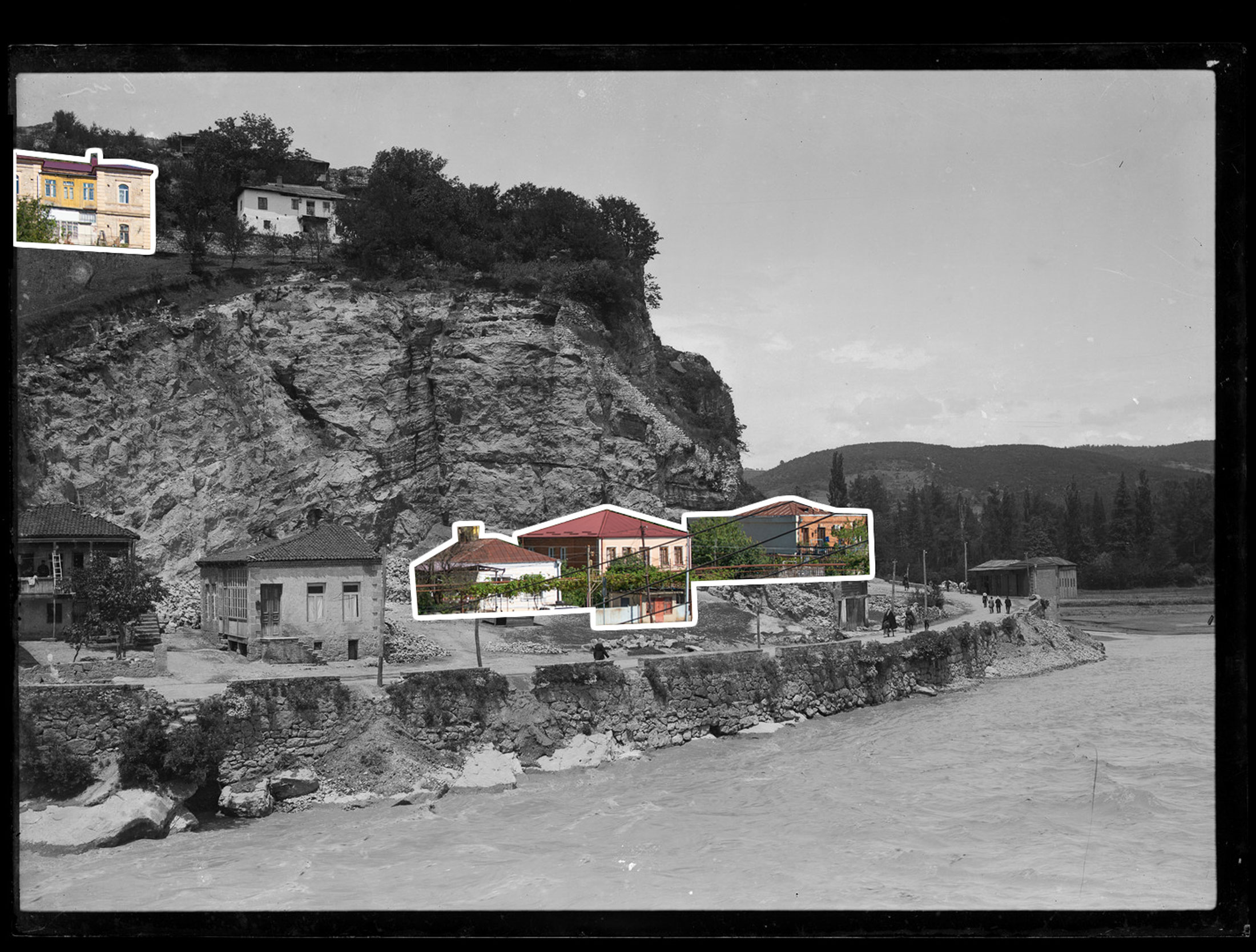
Residential houses on the right bank of the Rioni River, circa 1901.
In the meantime,Georgia has tightened the regulations on spatial planning, architecture and construction and the city is using it to guide the permit process. Permits that were issued before the regulations were changed, in 2019, were not subject to the same rules, however.
“Now is the moment when the process could be controlled,” argues Tamta. “It would be a devastating mistake to miss this momentum as Tbilisi and Batumi did. It is time to be reasonable.”
This feature story was prepared with support from the Friedrich-Ebert-Stiftung (FES) South Caucasus Regional Office. All opinions expressed are the author’s alone, and do not necessarily reflect the views of FES.
DONATE NOW

